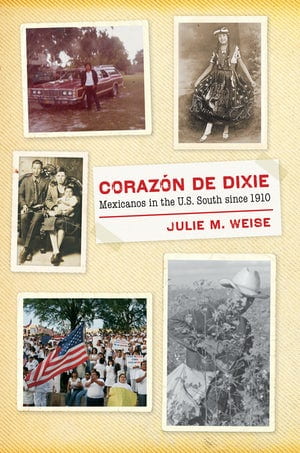Bienvenidos/Welcome
This website serves as a companion to the book Corazón de Dixie for teachers, students, and scholars. The site provides a selection of original primary sources from each of the book’s five chapters, along with suggested essay and discussion questions based on those sources. Some of the sources are cited and analyzed in the book itself while others are unique to this website.
The documents are provided here in their original language of Spanish or English. Some Spanish-language documents also include translations into English, and it is possible to answer the suggested analytical question for each chapter using only translated and English-language documents.
However, more than half of today’s college students know at least some Spanish from high school, their families of origin, or lower-division language courses. My colleague Claudia Holguín and I have found in our bilingual course, “Latinos en las Américas,” that students with at least one year of college Spanish, two years of high school Spanish, or who were raised in a bilingual household can read and understand Spanish-language historical documents with the help of a dictionary. Traditional college Spanish curricula have often failed to acknowledge the linguistic skills and strengths of this latter group, known as “Heritage Spanish speakers.” Interpreting historical documents in their original Spanish can provide a great opportunity for these students to develop and demonstrate their considerable Spanish abilities in the university setting.
Whether heritage or second-language Spanish learners, those who are not experienced at reading longer passages in the language may find these documents frustrating at first. Take a deep breath, read it again, try some of the strategies explained on this guide, and you will eventually be able to derive meaning from the documents even if you don’t understand every word. Students who do not speak any Spanish but who have proficiency in another Romance language (such as French, Italian, or Portuguese) can use the same tips and will be able to understand parts of the documents as well. I have also provided tips on unusual words and phrases to help readers derive meaning from the documents.
I would love to receive feedback from students, teachers, and researchers on this site or any other aspect of Corazón de Dixie. ¡Gracias por leer y estamos en contacto!
– Julie M. Weise

eBook and print available at your retailer of choice

Primary Sources

Chapter 1
Mexicans as Europeans: Mexican Nationalism and Assimilation in New Orleans, 1910-1939

Chapter 2
“Different… from that which is intended for the colored race”: Mexicans and Mexico in Jim Crow Mississippi, 1918-39

Chapter 3
Citizens of Somewhere: Tejanos, Braceros, Dixiecrats, and Mexican Bureaucrats in the Arkansas Delta, 1939-64

Chapter 4
Mexicano Stories and Rural White Narratives: Creating Pro-Immigrant Conservatism in Rural Georgia, 1965-2004

Chapter 5
Latest News
Pro-immigrant conservatism is back?!
Since I put the finishing touches on Corazón de Dixie in 2015, Trumpism and its anti-immigrant rhetoric have overtaken the Republican Party. The term “pro-immigrant conservatism”—a phenomenon I documented in my chapter on rural Georgia from the 1960s-80s—today seems...
Mexicanos in New Orleans: back to the 19th century
There is some fabulous new research coming out now on the histories of Latinxs in the U.S. South. For example, I just read, “Brokering Modernity: The World’s Fair, Mexico’s Eighth Cavalry Band, and the Borderlands of New Orleans Music, 1884-1910.” This dissertation by...
Trump’s inaugural: “Bring back our borders.”
In his inaugural address today, Donald Trump promised to "bring back our borders." The refrain is inaccurate (U.S. borders were not seriously policed until the 1990s and are more policed today than ever before) but it is familiar. Lately this line has echoed most...

